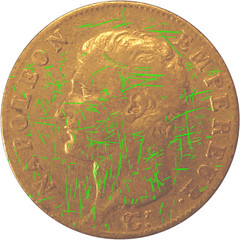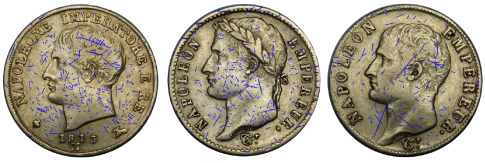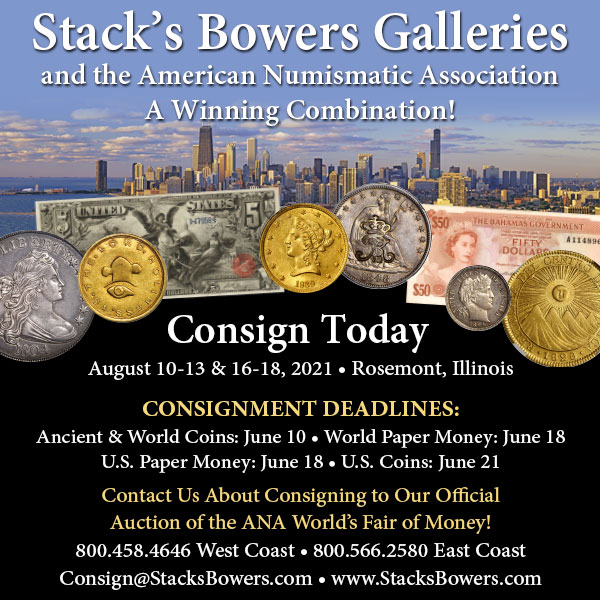
Economist, author and E-Sylum contributor François R. Velde co-authored a new paper in the journal Physica A: Statistical Mechanics and its Applications titled Coin wear: A power law for small shocks. Interesting for those of us who geek out on both coins and math.
-Editor
 Abstract
Abstract
The study of coin wear is useful for numismatics and economics. We examine a 19th century gold coin with a SEM and show that weight loss is due to a large number of small shocks that follow a truncated power law. Under the compound Poisson process we propose, weight loss over time is nearly deterministic in the proportion of time actually spent in circulation.
Introduction
The study of wear, now a fully fledged branch of physics [1], dates back to the late eighteenth century. The first studies, on gold and silver coins, were carried out by the most prestigious scientists: Isaac Newton [2], Henry Cavendish, Jean-Baptiste Dumas, Jean-Charles de Borda, Joseph-Louis Lagrange, Antoine Lavoisier. The interest was practical. Governments wanted to measure wear on coinage to estimate the cost of replacing worn coins with new ones. Interest waned after World War I brought the end of the gold standard and coins ceased to be made from precious metals. The subject nevertheless remains of interest for numismatics and economics: if wear is subject to regular laws, inferences can be made about the age of an undated coin or about the intensity of use (velocity).
Abrasion is the main phenomenon at play, as corrosion and transfers of matter occurring during two-body shocks can be neglected for gold. The "three body problem" is the key factor. It involves two coins and an abrasive dust in between. Matter is removed by micro-cutting and micro-plowing that create V-grooves and U-grooves. The length of the grooves depends on the duration of the shock while their depth reflects the force applied and the size of the dust. Abrasion is inversely proportional to the alloy's hardness. While hardness has little or no effect on the number of scratches or their length, it affects their depth and hence the volume removed by abrasion. Hence hardness can play a role when coins of different alloys are compared.
This paper investigates the micro-foundations of coin wear. First we examine a standard gold coin at the microscopic level with a scanning electron microscope (SEM) to determine the nature of the shocks that result in weight loss. Then we analyze the statistical distribution of shocks and find a power law. In conclusion we propose a model of coin wear as a Poisson process. The distribution of wear in a sample of coins of a given age results from randomness not in the process of abrasion itself in how long coins are in circulation and exposed to abrasion.
To read the complete article (available until May 30, 2021), see:
Coin wear: A power law for small shocks
(https://www.sciencedirect.com/science/article/pii/S037843712100220X)
Wayne Homren, Editor
The Numismatic Bibliomania Society is a non-profit organization
promoting numismatic literature. See our web site at coinbooks.org.
To submit items for publication in The E-Sylum, write to the Editor
at this address: whomren@gmail.com
To subscribe go to: https://my.binhost.com/lists/listinfo/esylum
Copyright © 1998 - 2024 The Numismatic Bibliomania Society (NBS)
All Rights Reserved.
NBS Home Page
Contact the NBS webmaster
|




